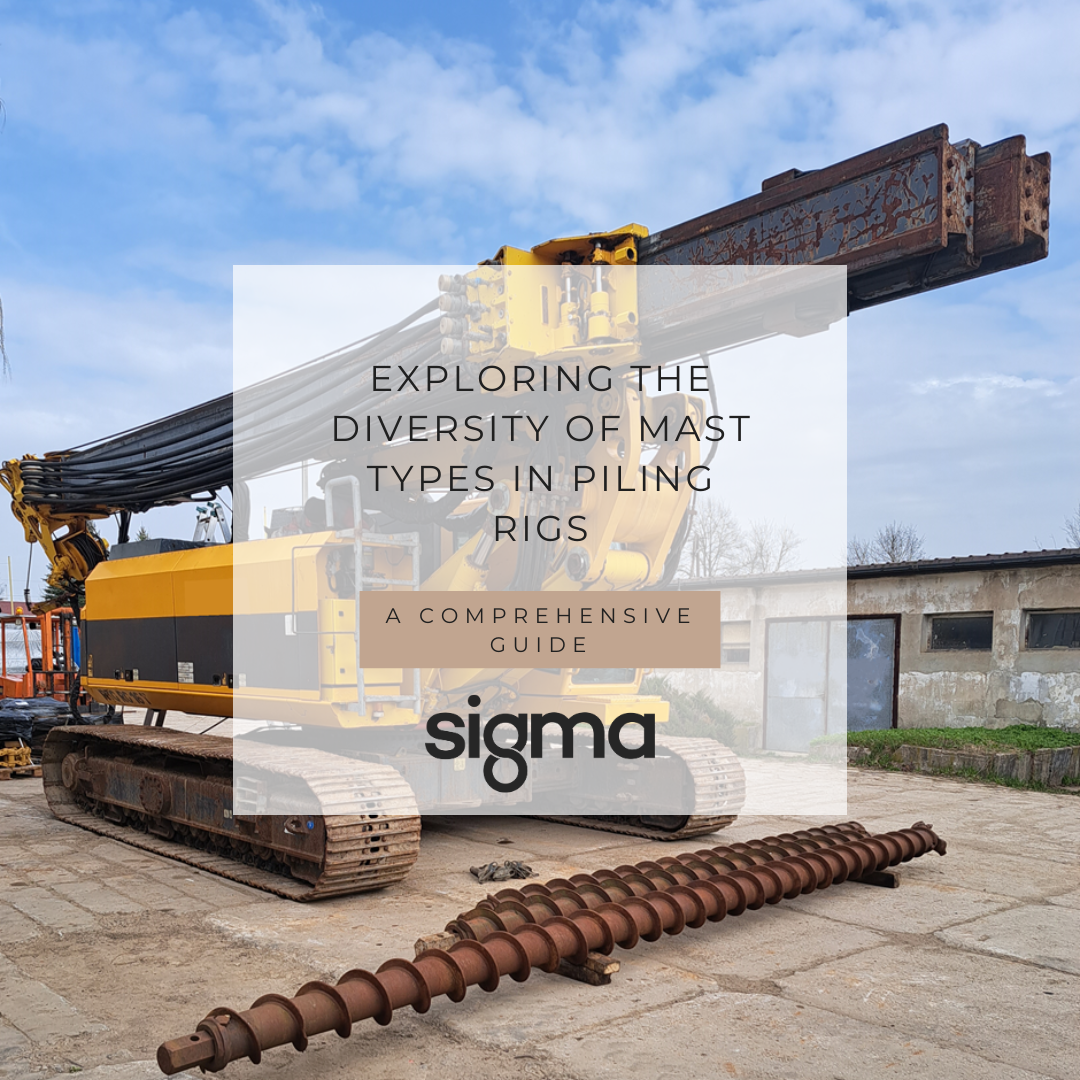
Introduction
Piling rigs are essential equipment in construction and civil engineering projects, particularly in laying foundations for structures. One critical component of these rigs is the mast, which plays a pivotal role in supporting the drilling equipment and ensuring stability during the piling process. In this guide, we'll delve into the various types of masts found on piling rigs, exploring their features, functionalities, and applications.
Telescopic Masts:
Telescopic masts are a popular choice in piling rigs due to their versatility and adjustable height capabilities. These masts consist of multiple nested sections that can extend and retract, allowing for varying drilling depths and easy transportation. Telescopic masts offer flexibility in adapting to different site conditions and project requirements, making them suitable for a wide range of piling applications.
Fixed Masts:
Fixed masts, also known as lattice masts, provide robust support and stability to piling rigs. Unlike telescopic masts, fixed masts do not have adjustable height capabilities. Instead, they offer a solid and rigid structure that is well-suited for heavy-duty drilling operations. Fixed masts are preferred in scenarios where consistent drilling depth is required, and where the emphasis is on maximum stability and precision.
Hydraulic Masts:
Hydraulic masts utilize hydraulic systems to adjust their height and angle, offering the benefits of both telescopic and fixed masts. These masts provide operators with precise control over drilling parameters, allowing for efficient performance in varying soil conditions. Hydraulic masts are valued for their ease of operation, rapid setup, and ability to adapt to changing terrain, making them ideal for dynamic piling projects.
Foldable Masts:
Foldable masts are designed for enhanced portability and ease of transportation. These masts feature collapsible sections that can be folded down for compact storage and transport, minimizing logistical challenges on the job site. Foldable masts are particularly advantageous for projects in remote or confined spaces where access is limited, enabling piling operations in otherwise challenging environments.
Modular Masts:
Modular masts offer a customizable solution to meet specific project requirements. These masts consist of interchangeable components that can be configured and assembled according to the needs of the application. Modular masts provide versatility and scalability, allowing operators to adapt their piling rigs for different tasks and environments. With modular masts, contractors can optimize their equipment for maximum efficiency and productivity.
Conclusion
The diversity of mast types available for piling rigs reflects the evolving needs and technological advancements in the construction industry. Whether it's telescopic, fixed, hydraulic, foldable, or modular masts, each type offers unique advantages and capabilities to cater to different piling applications. By understanding the characteristics of these mast types, contractors and operators can make informed decisions when selecting equipment for their projects, ultimately optimizing performance and achieving successful outcomes.
Contact us with any enquiries!
T: +44 (0) 1642 206100
E: sales@sigmaplantfinder.com
Disclaimer: This blog post contains content generated by an artificial intelligence (AI) model. While we have made efforts to ensure the accuracy and quality of the information provided, it is important to note that AI-generated content may not always be error-free or fully aligned with current standards, regulations, or the latest research. We recommend using this information as a starting point for your research and analysis, but we strongly encourage you to verify the facts, consult experts, and cross-reference the content with trusted sources before making any decisions or drawing conclusions based on the information presented in this blog post. The views and opinions expressed in this content are not necessarily those of the blog's author or publisher, and we cannot be held responsible for any consequences that may arise from its use.
